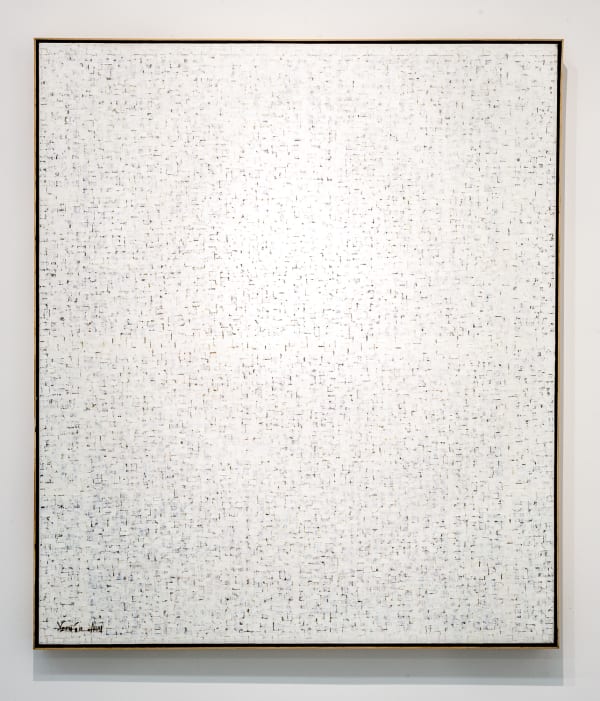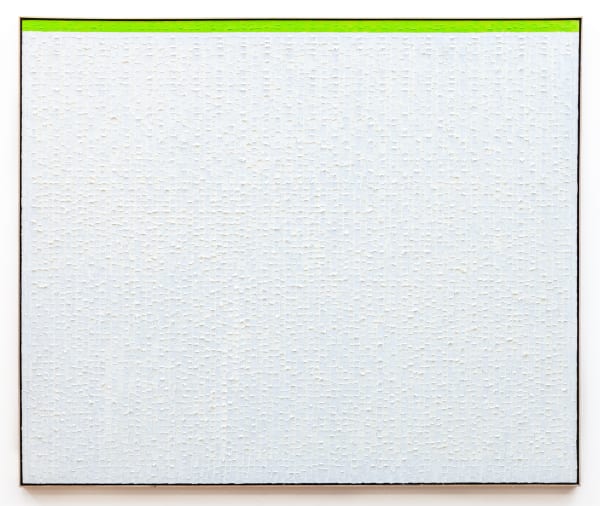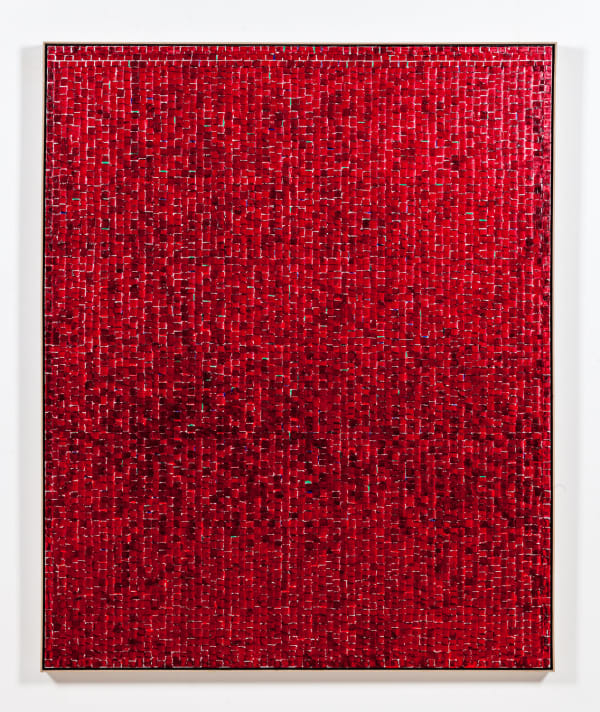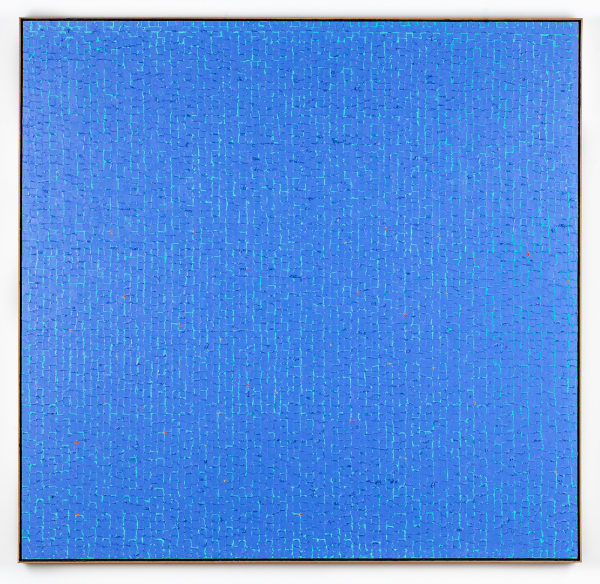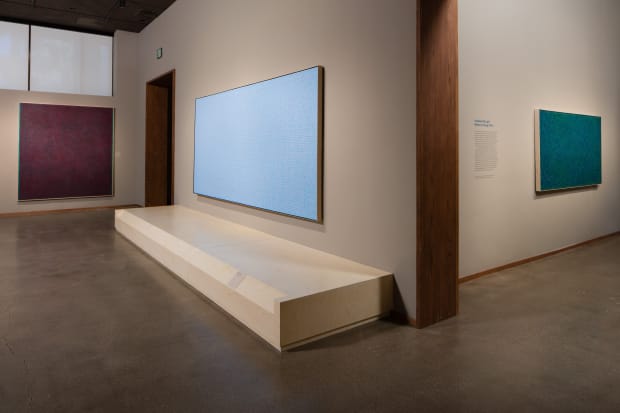-
Kavi Gupta proudly presents a solo presentation of Young-Il Ahn’s Water series for The Art Show 2021, presented by ADAA. This survey will offer viewers an intimate introduction to an artist of unparalleled talent and dedication, and to one of the most extraordinary bodies of abstract paintings created in the past 40 years.
Almost a year has passed since Ahn’s death. Born in 1934 in Gaesong—a North Korean city near the demilitarized zone, but at the time of Ahn’s birth, part of colonial Japan—Ahn endured his allotment of trauma, from political pressure and war, to his sister’s death from drowning in a stream as a child. He found his oasis in the arts. Identified as an artistic prodigy, Ahn’s first solo painting exhibition came at age six, in Tokyo. He won the First Korean National Art Exhibition at age 15, just months before the Korean War began.Ahn’s reputation grew rapidly in the newly liberated Korea, a new generation of artists seeking to develop their own voice in the post-war cultural space. Ahn was encouraged by his parents to pursue the arts to a university level. His father himself an arts educator of note: Seung-gak Ahn, Young-Il’s father, was also an instructor to Hyong-keun Yun and Chang-sup Chung, two legends of contemporary Korean art. Chung in particular was close to Ahn, Young-Il describing him as almost like an older brother figure.
Ahn’s paintings caught the attention of Americans in Korean in the late 1950s. Their enthusiasm for his practice resulted in a solo exhibition at the Hull House in Chicago in 1959.
Ahn took refuge in the United States at the start of the Korean DMZ Conflict in 1966, choosing Los Angeles as his adoptive home. He would remain there more than 50 years, until his passing in 2020. His earliest California paintings were inspired by the landscape and culture of the state, and for a time, he grew a cult following of collectors.
After a harrowing, near death experience of becoming lost in the fog on a fishing trip in 1983, Ahn had a profound experience that affected his painting practice from that moment onward. He writes in his memoir about the moment the fog finally lifted, and the brilliant sunlight illuminated the water’s surface:
“My favorite colors from nature stretched to infinity. The sunlight crashed and reflected against the water every moment, dispersing splendid and sparkling colors in layers.”
That phenomenal moment inspired Ahn to return to his studio, whence began his Water series, a nearly 40-year-long endeavor to put that profound experience of color and light into the canvas.
Ahn’s reputation grew rapidly in South Korea following a series of exhibitions with the legendary Hyundai Art Gallery, including solo gallery exhibitions in 1982 and 1986, even before they would take on the name “Gallery Hyundai” in 1987. This era of explosive innovation in the Korean art world—Nam June Paik showing there in 1986, Lee Ufan in 1987, for example—remains undeniably relevant to this very day. Despite all this success, Ahn would remain relatively obscure in the United States until a series of retrospectives on dansaekhwa in the 2010s brought new context to his (and others) practice.
Ahn had a well-deserved solo retrospective at LACMA in 2017. The exhibition also marked the first-ever solo exhibition at LACMA by a Korean-American artist, a milestone decades overdue, given Los Angeles’ long and rich history with Korean culture. Met with rave reviews and given an extension to its run due to popular demand, the exhibition stands as the most significant institutional representation of Ahn’s work to date.
-
-

-
Example of an early Ahn work from LACMA solo retrospective
-
Example of an early Ahn work from LACMA solo retrospective
-
LACMA | Unexpected Light: Works by Young-Il Ahn
With Stephen Little, Florence and Harry Sloan Curator of Korean and Chinese Art, LACMA and Virginia Moon, Assistant Curator of Korean Art, LACMA

